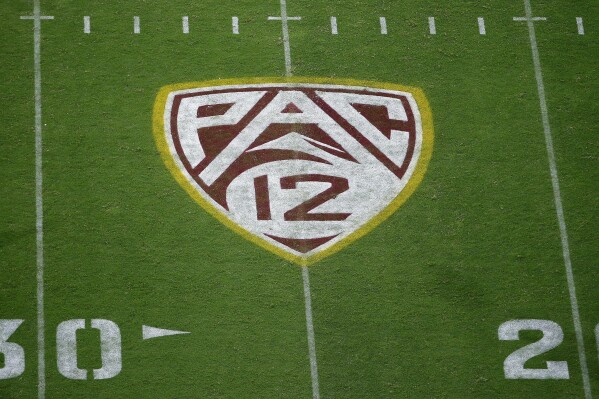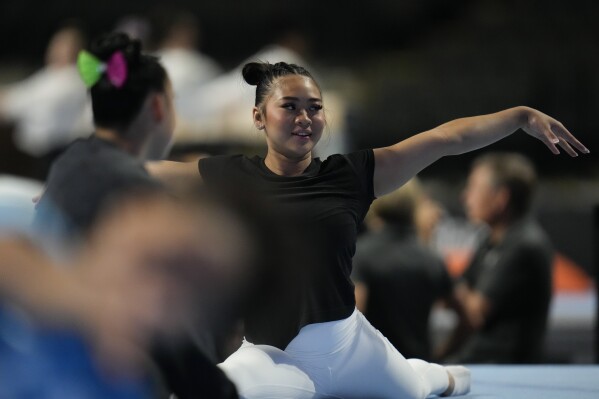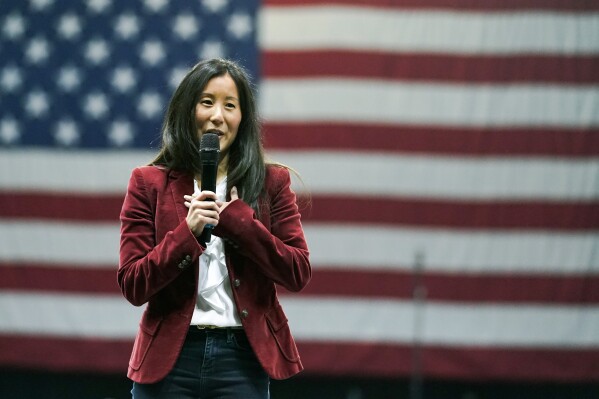As hazing scandal plays out at Northwestern, some lawyers say union for athletes might have helped
CHICAGO (AP) — As Northwestern became engulfed in a hazing scandal in recent weeks, Michelle Simpson Tuegel thought about the athletes she represented in high-profile lawsuits.
The Dallas-based attorney helped negotiate about $900 million in settlements in cases involving U.S. Olympic and national team gymnasts who were sexually assaulted under the guise of medical exams by sports physician Larry Nassar and by former athletes at Michigan who were victimized by the late Dr. Robert E. Anderson.
Simpson Tuegel said she sees common threads with the situation at Northwestern. And she can’t help but wonder: What if college athletes had a union?
“It’s bigger than one university,” Simpson Tuegel said. “It’s bigger than one survivor who has been abused or even just one team. It is a deeply ingrained cultural issue and the product often of long-term institutional negligence.”
 The Pac-12 Conference is facing a dire future following mass exodus of storied programs
The Pac-12 Conference is facing a dire future following mass exodus of storied programs
 Olympic gymnastics champion Suni Lee began pointing to 2024 long ago. It could be a difficult road.
Olympic gymnastics champion Suni Lee began pointing to 2024 long ago. It could be a difficult road.
 USA Gymnastics to expand its partnership with Nike, a sign it’s gaining trust in the post-Nassar era
USA Gymnastics to expand its partnership with Nike, a sign it’s gaining trust in the post-Nassar era
A decade after Northwestern was at the center of an attempt to establish the first college athletes union, the university is facing more than a dozen lawsuits across multiple sports with allegations including sexual abuse by teammates as well as racist comments by coaches and race-based assaults. The cases span from 2004 to 2022, and attorneys representing some of the athletes who have already sued say more are coming. Football coach Pat Fitzgerald was fired after 17 seasons.
If college athletes had a union, Simpson Tuegel could see things playing out differently.
They might have more protection and support to complement school protocols. They might feel more comfortable reporting problems to a union representative not affiliated with the program or college, which might help combat what Simpson Tuegel described as a “culture of silence.” That might lead to issues being addressed sooner rather than later.
Other attorneys who discussed the Northwestern situation weren’t as sure. But they agreed there is strength in numbers, and a union wouldn’t hurt.
“At the end of the day, I don’t put this on the players — or the players not being organized,” said attorney Steve Levin, who is representing some of the athletes suing Northwestern. “This is, in my opinion, an administration problem. Northwestern had a clear-cut policy. That policy wasn’t followed. It should have just been ended, and the players should have never been in a position of having to have a voice to prevent it.”
Fitzgerald, whose attorney says he had no knowledge of hazing in his program, was fired July 10 after initially being suspended two weeks by President Michael Schill following an investigation by a law firm. It found hazing within the program and “significant opportunities” for the coaching staff to know about it
Baseball coach Jim Foster was let go a few days later amid allegations he created a toxic culture. Last week, the school hired former U.S. Attorney General Loretta Lynch to investigate the athletic department and its anti-hazing procedures.
Levin said what’s happening at Northwestern isn’t the same as a dispute over, say, wages between a union and a company. “In a situation like this, there’s just not two sides to it,” he added.
Could a union have helped?
“I don’t know,” Levin said. “I don’t know if a player in a situation like this would go to a union. But it certainly could not have hurt, let’s just say that. If the players had somebody outside of the Northwestern staff and administrators, that could have provided a vehicle to ending this type of behavior earlier.”
Judie Saunders, an attorney who has worked with Olympic and Division I athletes and specializes in survivors of assault, said she doesn’t see a union helping “in practice” when it comes to player-on-player abuse.
“The student in that situation and the survivors that I’ve dealt with, they are whistleblowers,” she said. “A whistleblower on a college campus is one of the worst atmospheres to be in. And we all know why: It’s a closed community.”
She said she knows of whistleblowers who developed suicidal thoughts for the retribution they experience. Coaches often tacitly encourage other players to carry it out for them.
“If you are a thriving, good athlete, you are going to get on the good side of the bully, whether it’s the coach, whether it’s the assistant,” Saunders said. “And you’re going to do whatever you can to stay on that good side. That includes meting out the retribution for whistleblowers.”
When it comes to coach-on-player abuse, she thinks a union might be more helpful.
In January 2014, Northwestern quarterback Kain Colter announced plans to form the first union for college athletes. He became the face of a cause that struck at heart of college athletics, with conferences and schools insisting such a move would end amateur athletics as we know it and disrupt a system that funnels hundreds of millions of dollars to conferences and schools.
Fitzgerald lobbied hard against it. The National Labor Relations Board ultimately stopped the push when it overturned a ruling by a regional director saying Northwestern athletes should be allowed to form a union. Players had cast secret ballots on whether to unionize; the sealed ballots were later destroyed without being counted.
Attorney Wilma Liebman, who chaired the NLRB from 2009 to 2011, said it might be time for college athletes to revisit the issue. NLRB general counsel Jennifer Abruzzo wrote a memo two years ago stating college athletes are employees under the National Labor Relations Act.
“There’s clearly been an upswing in union organizing, collective action in general,” she said. “It’s definitely a moment when a lot of reporters are looking at labor issues, labor issues are no longer marginalized. There’s a lot of interest, a lot of attention, I think a lot of public support.”
___
AP college football: https://apnews.com/hub/college-football
Disclaimer: The copyright of this article belongs to the original author. Reposting this article is solely for the purpose of information dissemination and does not constitute any investment advice. If there is any infringement, please contact us immediately. We will make corrections or deletions as necessary. Thank you.







